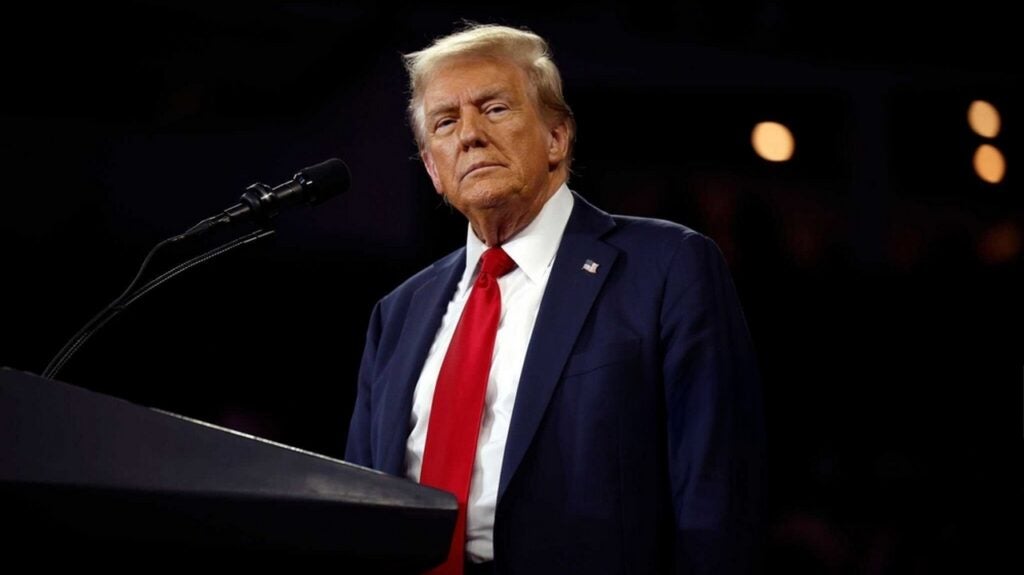
Corporate brass has already laid out counterstrategies to President-elect Donald Trump‘s tariff plans.
The Trump administration is expected to raise tariffs on Chinese imports by an average of 20 percentage points, with non-consumer goods facing hikes as high as 60 percentage points, Goldman Sachs’ Ronnie Walker said in a Tuesday note.
Additional tariffs on auto imports are also expected, along with a 40% chance of a universal 10%-20% tariff on all imports from other countries, the economist said.
Goldman Sachs analyzed discussions over the third quarter and identified three key tactics based on insights from corporate commentary.
Here’s how U.S. businesses are bracing for the tariff storm:
Strategy 1: Make Customers Pay More
In dealing with higher import costs, many companies will take the straightforward approach: raise prices.
Major firms like AutoZone Inc. AZO and Best Buy Co. Inc. BBY said they expect to pass tariff expenses directly to customers.
As Goldman Sachs highlighted in its note, Best Buy acknowledged that in previous tariff rounds, costs were “largely shared between vendors, the company, and ultimately the end customer.”
Similarly, Traeger Inc. COOK said, “Pricing is always a lever… most brands will lean into price to mitigate the downside.”
Goldman Sachs economists highlighted that tariffs tend to raise prices across the board, with the burden typically landing on consumers.
“The experience of the first Trump administration shows that tariffs are largely passed on to consumer prices,” Walker wrote.
Strategy 2: Stockpile Imports
Some companies are racing to get ahead of the tariff curve by stockpiling goods.
Archer-Daniels-Midland Company ADM indicated during its third-quarter earnings call that the trend of building up inventories in advance reflects preparation “for the eventuality of tariffs,” according to Goldman Sachs.
Clarus Corp. CLAR also highlighted that pulling forward purchases before tariffs take effect provides a buffer:
“Once we get a sense of the timing and magnitude of tariffs, we can adjust purchases to build inventory,” Clarus said on its earnings call, according to Goldman Sachs.
The investment bank added: “Our global economics team recently collected anecdotal reports that suggest this may already be underway.”
Port data from China has shown a notable spike in U.S.-bound shipments since the 2024 election. European exporters are also reportedly front-loading shipments to avoid potential tariffs.
Stockpiling is only a temporary fix, as storage and carrying costs can erode margins over time, per Goldman Sachs.
Strategy 3: Reshuffle Supply Chains
For many companies, shifting supply chains away from tariff-heavy regions like China has become the top long-term solution.
Over the last seven years, U.S. manufacturers have been reducing dependence on Chinese imports in favor of Mexico and other Asian countries, according to Goldman Sachs.
Goldman Sachs highlighted insights from American Woodmark Corp. AMWD and Stanley Black & Decker SWK.
While American Woodmark has “significantly reduced exposure to Chinese imports,” Stanley Black & Decker said it may shift production to “other parts of Asia, or Mexico.”
Yet Goldman economists said moving production back to the U.S., a strategy often referred to as “reshoring,” still remains unlikely.
Is Reshoring Realistic?
“It’s just not cost-effective,” said Stanley Black & Decker. “There’s also a labor shortage in the U.S. to consider.”
Columbia Sportswear Company COLM added that even with tariffs as high as 40% on some footwear and apparel, the cost differential hasn’t spurred increased domestic production.
Despite calls for more domestic manufacturing, evidence suggests the U.S. economy remains deeply reliant on imported goods.
Over the last decade, imports of foreign intermediate and final manufactured goods have outpaced domestic manufacturing growth, according to Goldman Sachs.
Boot Barn Holdings Inc. BOOT acknowledged the challenge of fully decoupling from China.
Goldman Sachs highlighted management remarks from Boot Barn Holdings’ third-quarter earnings call: “We won’t move completely out of China, but we’ve done a good job balancing our exposure.”
On a more optimistic note, Digi International Inc. DGII revealed contingency plans to relocate manufacturing to U.S.-based facilities if conditions allow.
Read Next:
Image: Shutterstock
© 2024 Benzinga.com. Benzinga does not provide investment advice. All rights reserved.


